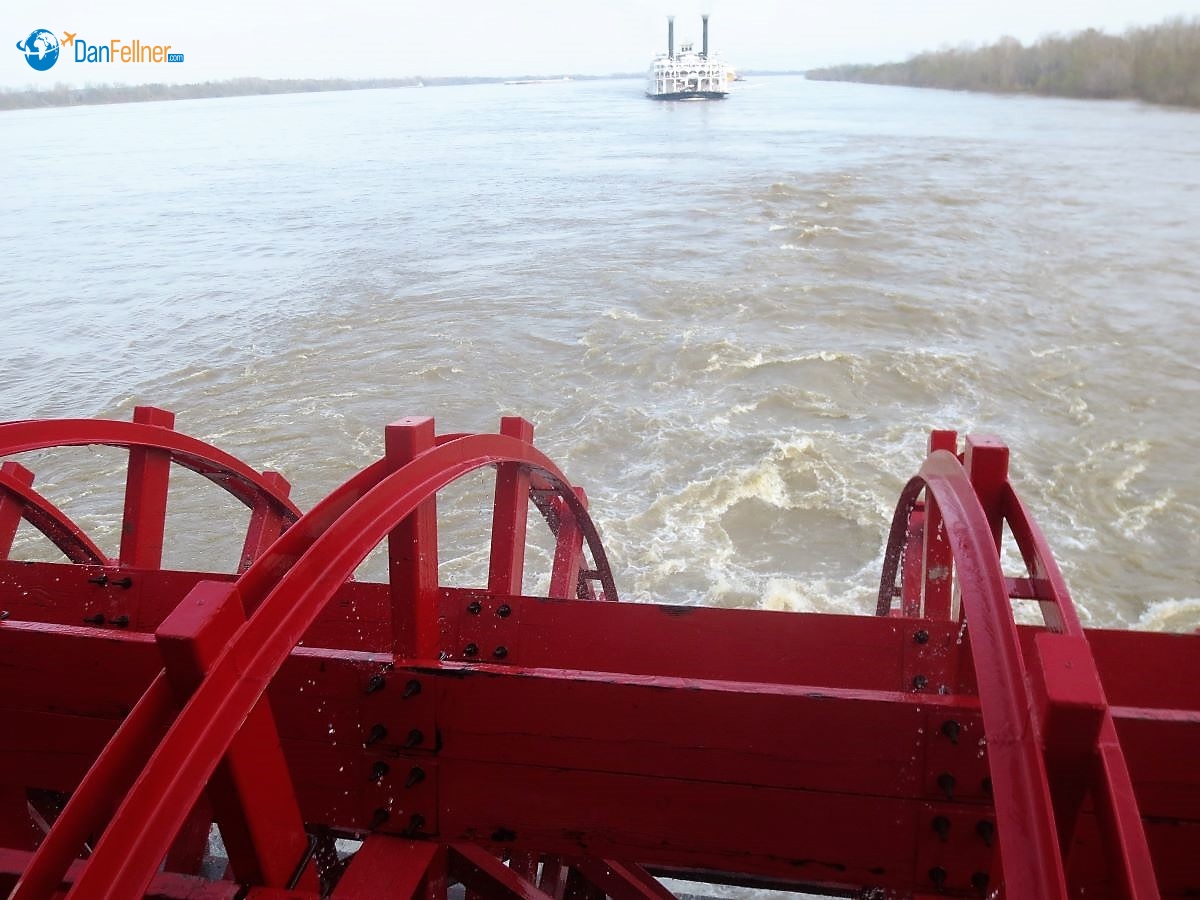Cruising the Mississippi on the paddlewheel-propelled American Duchess
The Arizona Republic — January 13, 2019
THE LOWER MISSISSIPPI RIVER – Big wheel keep on turning.
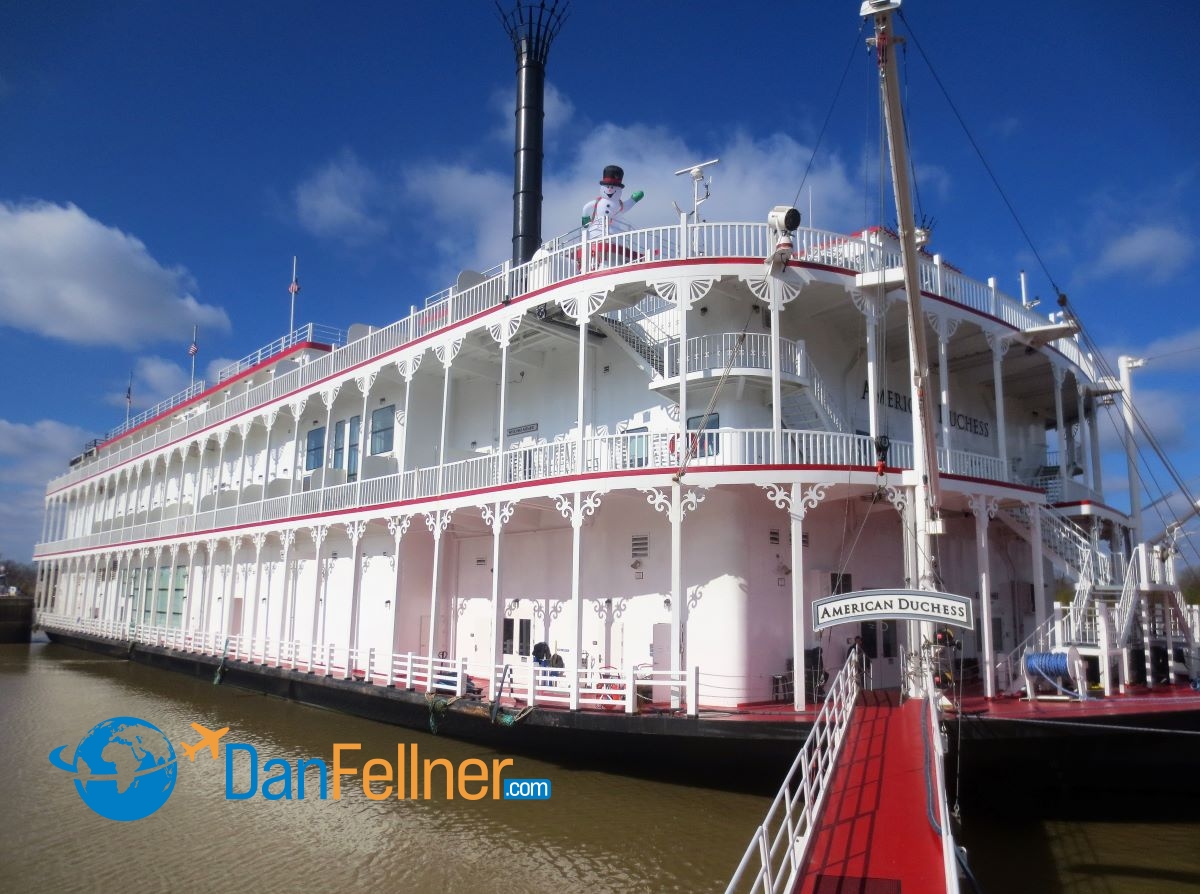
The American Queen Steamboat Company’s American Duchess in Vicksburg, Miss.
John Fogerty’s 1969 iconic song about hitching a ride on the “Proud Mary” evokes images of paddlewheel-propelled steamboats hauling people and cargo on the Mississippi River through the American South.
Today, most of the paddlewheels are gone, replaced by more efficient propulsion systems. But for those wanting an illuminating trip to learn about the era of antebellum plantations, Mark Twain, the Civil War and the horrors of slavery, there are still a few remaining paddle-wheelers traversing the waters still known locally as “Ol’ Man River.”

Capt. Joe McKey steers the American Duchess down the Mississippi toward New Orleans.
I recently spent a week on one of the paddle-wheelers — the American Queen Steamboat Company’s American Duchess, originally built as a casino riverboat in 1995, then elegantly refurbished in 2017 to accommodate 166 passengers. The boat, which reaches a top speed of 15 mph, resembles a floating two-tiered white wedding cake with red frosting.
According to Joe McKey, the Duchess’ Captain, the red paddlewheels on the back of the boat aren’t just for nostalgia. They provide 20-30 percent of the Duchess’ propulsion; the rest coming from diesel engines (see video shot by the author: paddlewheels propel the American Duchess).
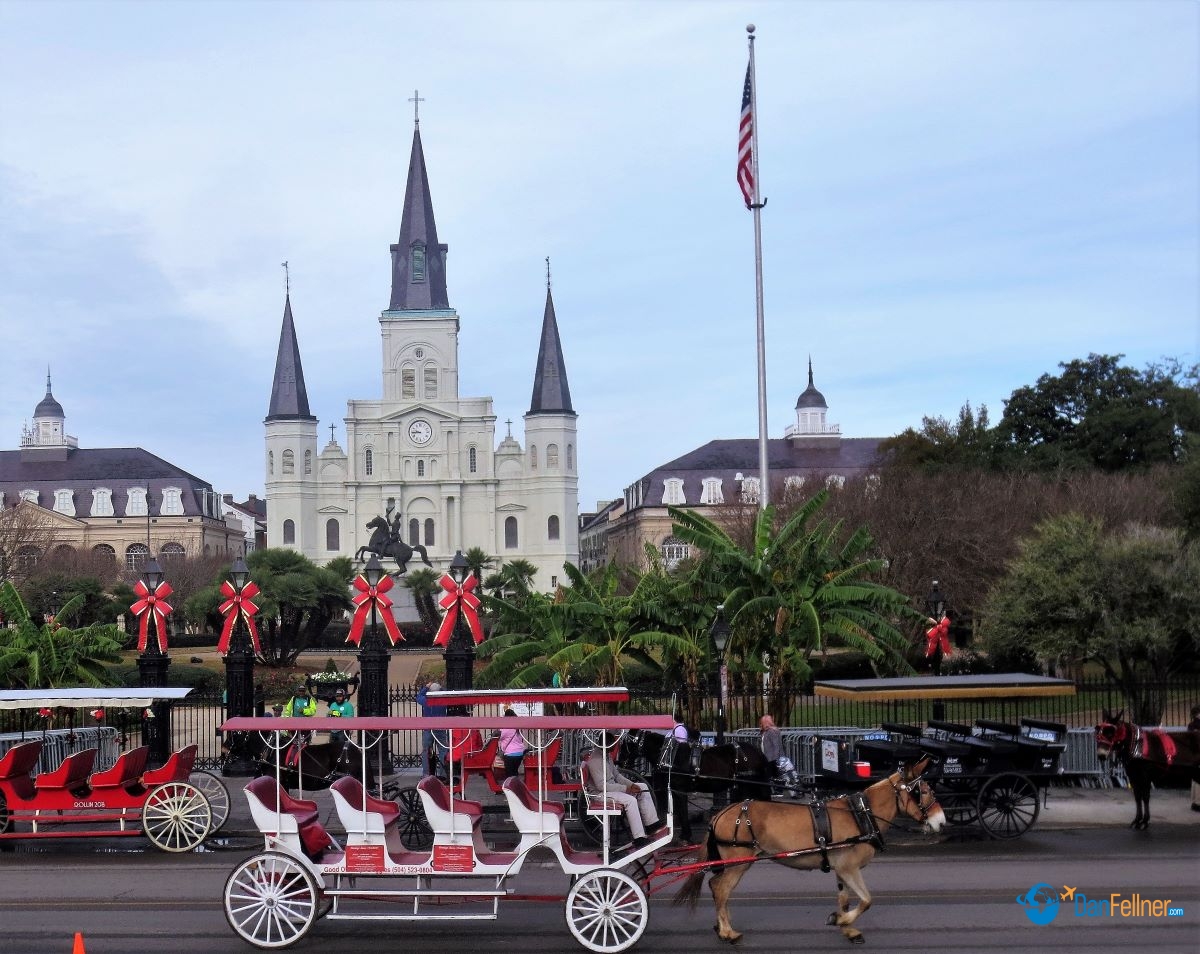
Jackson Square in the heart of New Orleans.
Cruising the Lower Mississippi is an eye-opening way to learn about the region’s history – good and bad – and the rich mixture of Creole, Cajun, French, Spanish and African-American cultures, which has created one of the most diverse and intriguing melting pots in the country.
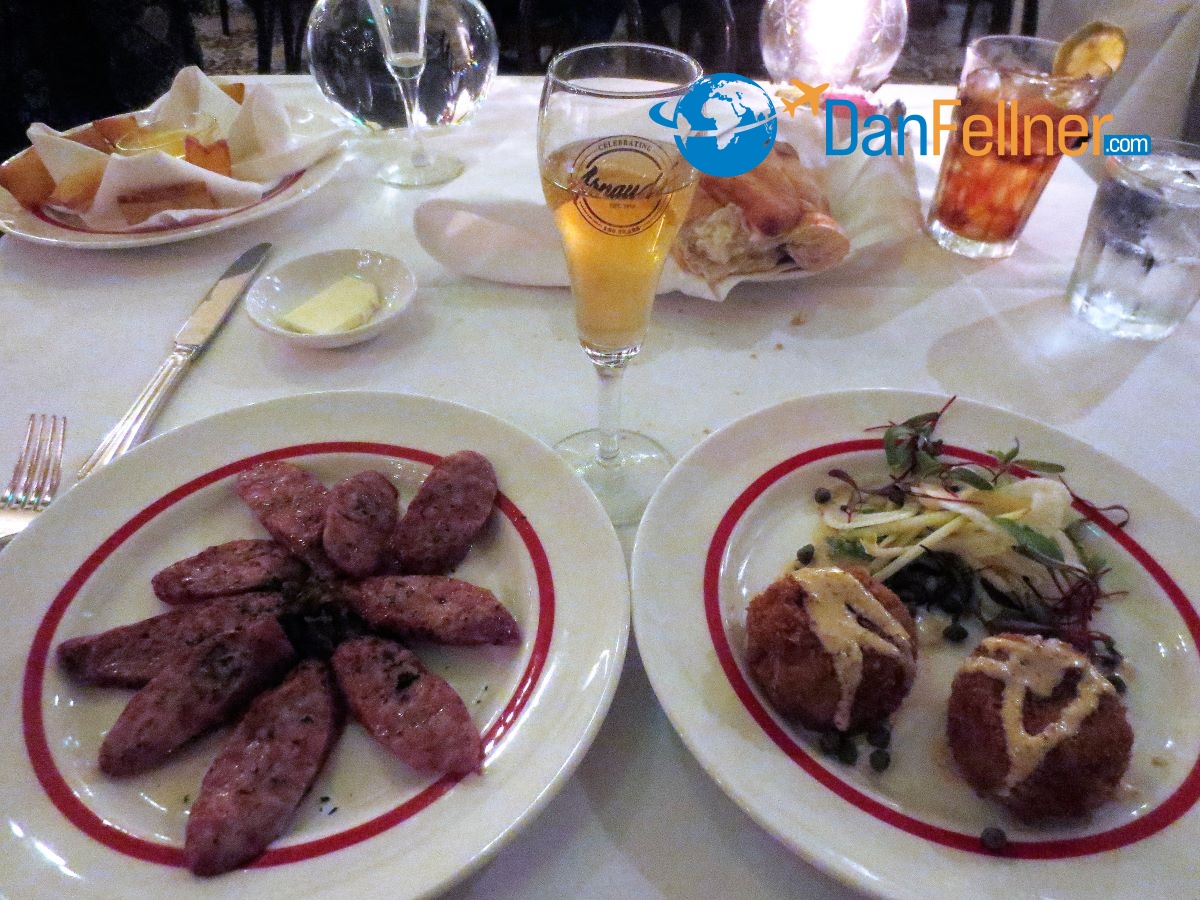
Alligator sausage and creole crabcakes at Arnaud’s in New Orleans.
After leaving New Orleans, the Duchess stopped in four ports in Louisiana and Mississippi. In each port, American Queen provided free hop-on, hop-off buses with tour guides so that we could explore at our own pace.
“Premium excursions” were also an option. Priced at around $70, they focused on specific themes or sites like the Civil War, Southern cooking or cotton plantations.
On a foggy morning near White Castle, La., we visited the Nottoway Plantation, built in 1859. With 64 rooms, it’s the largest antebellum plantation house in the South and is reminiscent of the fictional Tara plantation from “Gone with the Wind.”
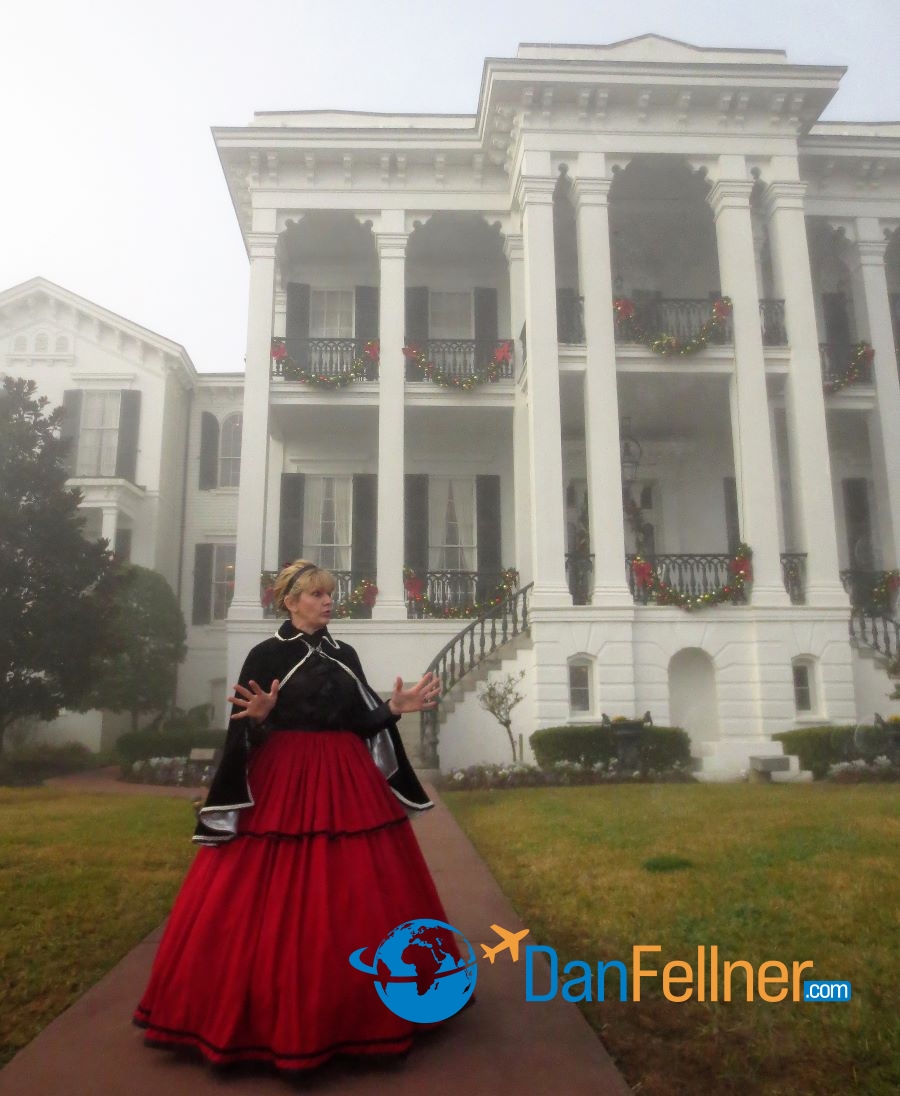
The Nottoway Plantation in Louisiana, built in 1859, is the largest antebellum plantation house in the South.
It was sobering to learn about the lives of slaves working the sugarcane and cotton plantations we visited. Our guides didn’t try to romanticize the South’s antebellum history, instead painting a realistic picture of the slave trade and the awful conditions that millions of Africans brought to the Americas against their will had to endure from early colonial days to the end of the Civil War.
“We don’t shy away from that kind of stuff,” said guide and historian Kyle Crosby, when I asked if I could see the 180-year-old former slaves’ quarters at the Laura Plantation, a woman-run-and-owned Creole sugarcane plantation near Vacherie, La. We were taken to the cabins where slaves lived – typically two families per cabin – which have been restored to show what conditions were like for the more than 300 slaves who once worked the plantation’s sugar fields.
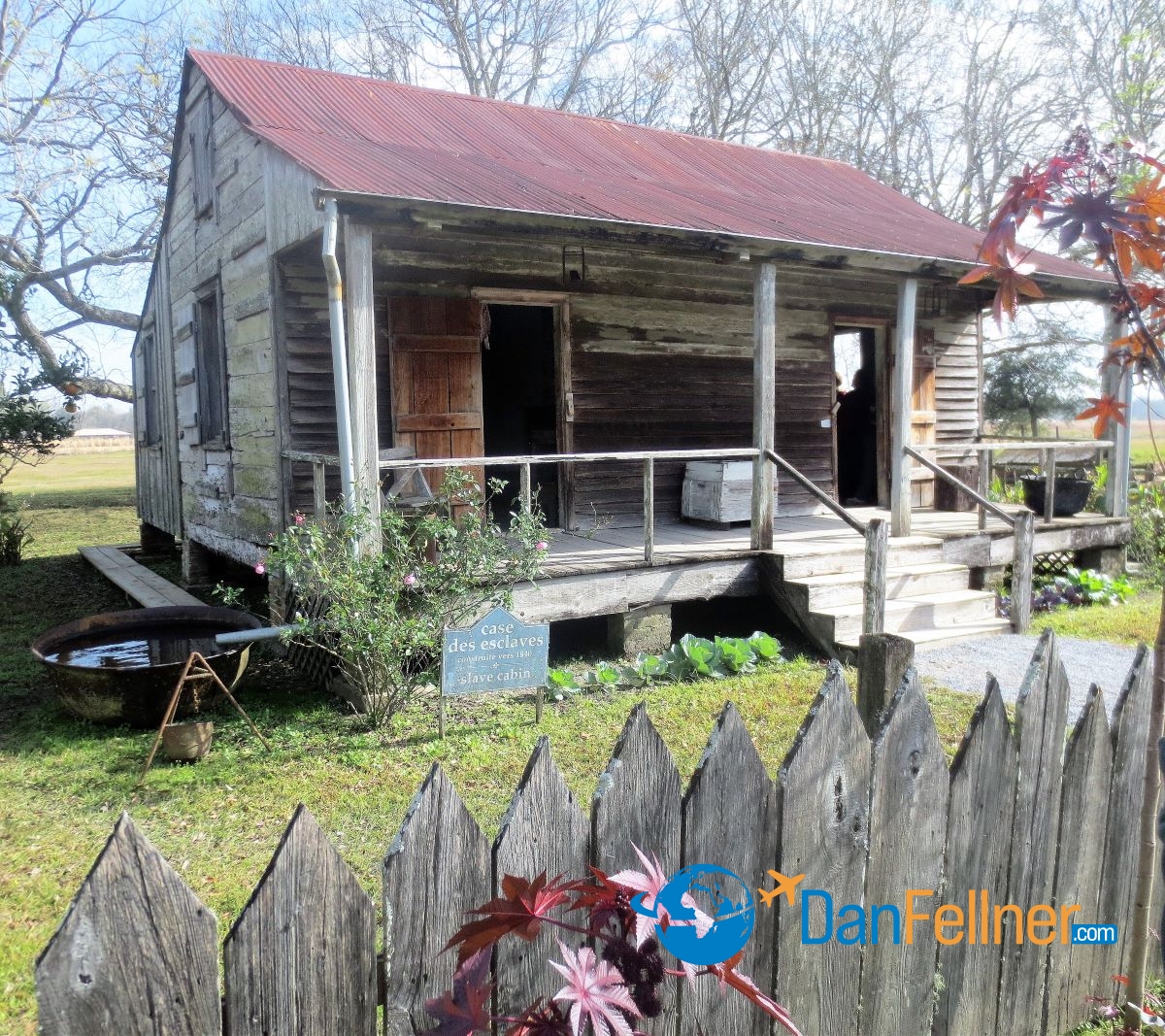
Slaves’ quarters built in 1840 at the Laura Creole Plantation in Louisiana.
In Natchez, Miss., we stopped for a visit at the notorious “Forks in the Road,” which at one time was the second-largest slave market in the South. Located about a mile outside of the city limits, there’s little to see other than some signs and small markers. But the historical magnitude of the site – where human beings were bought and sold like cattle – was difficult to absorb.
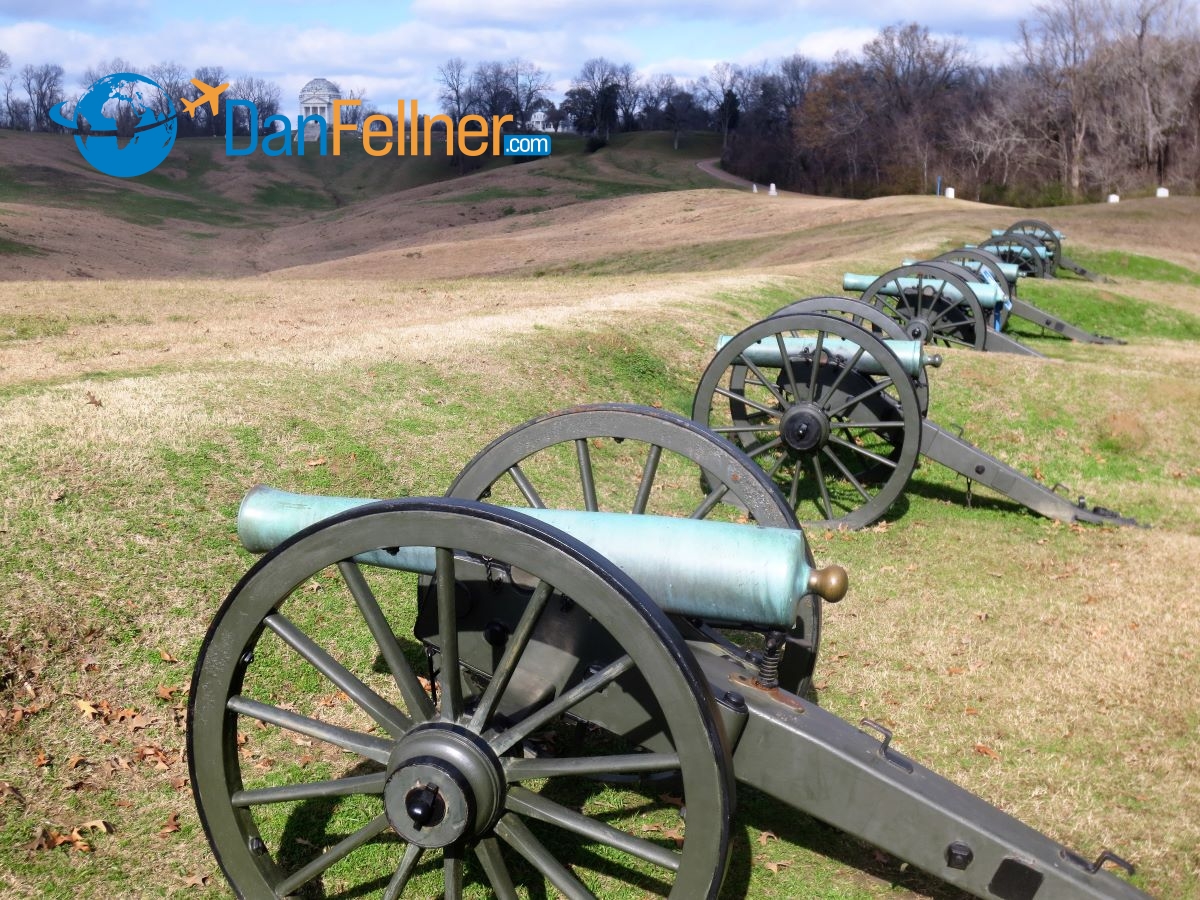
The battlefield at Vicksburg, where one of the most pivotal Civil War battles was fought in 1863.
It somehow seemed fitting that it was pouring rain during our visit to the Forks in the Road. Not so fittingly, the site is located on Liberty Road.
At our final stop in Vicksburg, Miss., we visited the site of one of the most pivotal battles of the Civil War. The surrender of Vicksburg by the Confederacy on July 4, 1863, gave the North control of the Mississippi River. Along with the Confederacy’s defeat the day before at Gettysburg, Pa., the South’s chance of winning the war had all but vanished. On a hillside across town, we visited the Vicksburg National Cemetery, where 17,000 Union servicemen are buried.
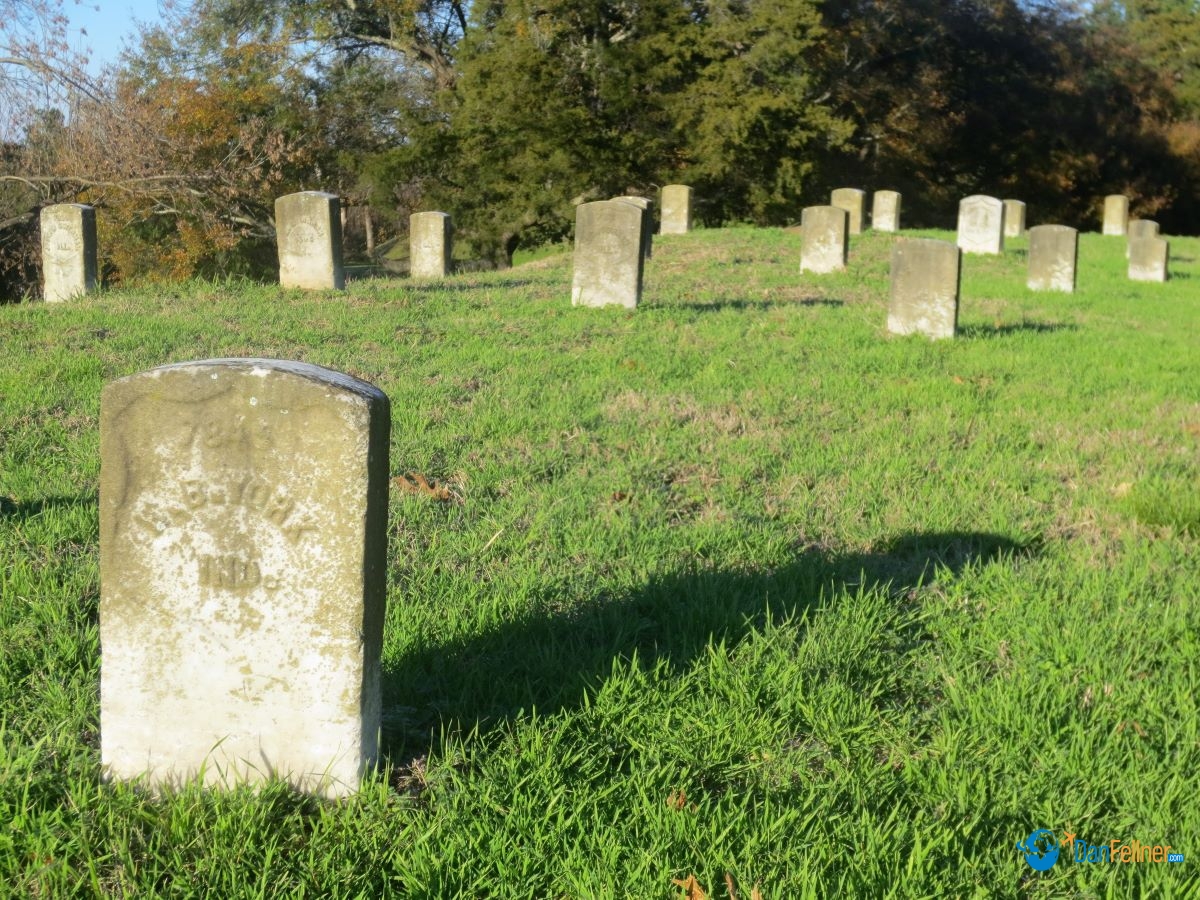
The Vicksburg National Cemetery in Mississippi holds the remains of 17,000 Union servicemen.
All told, we traveled 682 miles roundtrip from New Orleans to Vicksburg, with a slight detour on the Yazoo River. The weather was surprisingly chilly; there were days when temperatures never climbed out of the 40s and a heavy fog often blanketed the river in the mornings. But cruise fares on the Mississippi in the winter are cheaper and the crowds are smaller than in the spring or summer; our boat was only about 70 percent full.
Cruising the Lower Mississippi offers a distinctly different experience than river cruising in Europe. True, the scenery on the Mississippi isn’t as resplendent as what you’ll see on the Danube, Rhine or Seine. Instead of cruising past historic castles, churches and quaint villages, you’ll mostly sail by industrial barges and oil refineries.
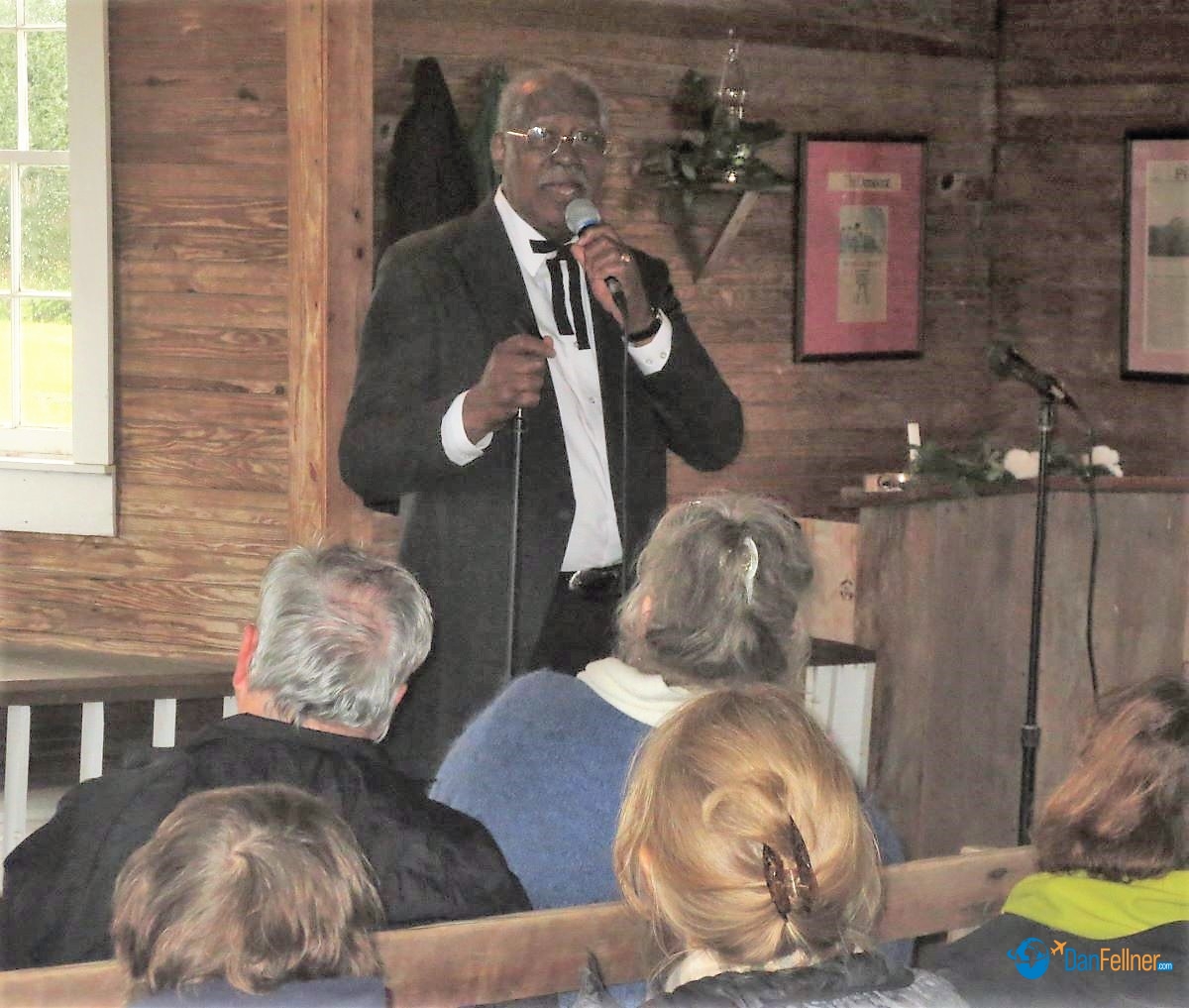
Willie E. Minor, 82, sings about slavery and the Mississippi River at a church on a cotton plantation in Louisiana.
But the onboard experience on the Duchess was better than what I’ve experienced in Europe. The boat – including the cabins — was far more spacious, offered nicer amenities, and there was first-rate entertainment every night. In addition to an onboard house band and entertainers, local singers would be brought on the boat to give concerts featuring music that originated in the region, including blues and country.
The boat’s “Riverlorian” would give lively daily lectures about the river and its history. And the crispy Mississippi catfish, Louisiana gumbo and vegan jambalaya served in the Duchess’ two restaurants were delectable. It was never hard to find a bottle of Louisiana-made Tabasco sauce to add some heat.
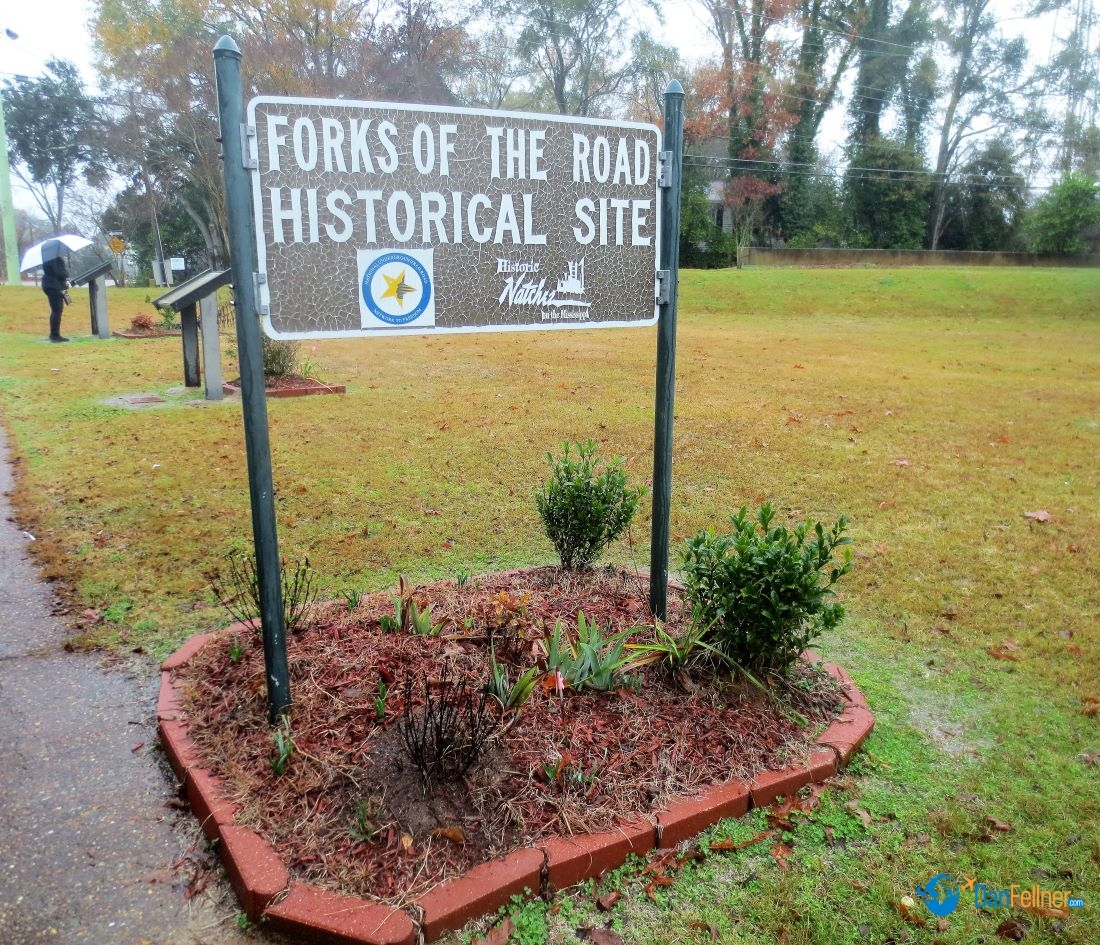
The Forks of the Road historical marker in Natchez, Miss., site of the South’s second-largest 19th-century slave market.
While the towns on the river can’t compete with the ambiance and architecture of a Vienna, Budapest or Strasbourg, a trip on the Mississippi offers its own unique charms and an authentic slice of Americana – especially music and food — that is difficult to replicate anywhere else.
As Mark Twain once wrote: “The Mississippi River towns are comely, clean, well built, and pleasing to the eye, and cheering to the spirit.”
Rollin,’ rollin,’ rollin’ on the river.

© 2019 Dan Fellner

